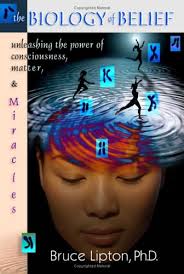J.K. Rowling has said in interviews that she outlined all of the Harry Potter books before even writing a single word. She also took two months to work out any plot issues before beginning the next book in the series.
Ian McEwan recently gave an interview stating he keeps a large notebook full of ideas where he sketches out the beginning of novels. He came up with the idea for Atonement with a single character. He said the image came to him, “of a young woman coming into an elegant drawing room holding some wild flowers she's just picked, looking for a vase, aware of a young man outside who's gardening, wanting to talk to him but also wanting to avoid him—and then realizing that I'd started a novel but I didn't know anything about it.”
I think it is partly that reason that I loved Irène Némirovsky’s Suite Française so much. The book contains two Appendixes outlining the story behind the half-finished novel, as well as Némirovsky’s own notes and sketches developing themes and characters.
The two novellas that make up Suite Française, “Storm in June” and “Dolce,” are beautifully written and meant to be part of a five-part masterwork that Némirovsky never finished because she was sent to Auschwitz in 1942, dying soon afterwards.
In the first novella, “Storm in June,” Némirovsky describes in vivid detail the exodus of people fleeing Paris as the Nazis approached. Though not a native, she excels at describing the details and minutia of the various social classes clamoring for food and shelter along the clogged roads leading away from the city. Her dedication to in-depth characterization comes through, giving each character and family a unique viewpoint and history, affecting how they deal with the chaos around them.
The second, “Dolce,” takes place in a small town in the French countryside. Taken over by the Nazis, Némirovsky chronicles the gradual shift in attitudes towards the invaders. While some inhabitants remain vigilant, many develop a casual likeness of the Germans, and many women take up intimate relationships with the soldiers. The story centers on the wealthy, but lonely, Lucile Angellier, who begins to develop feelings for the German officer staying in her family’s home.
Born into a wealthy Russian Jewish family, Némirovsky fled during the Revolution, finally settling in France as a young woman. She quickly became a well-respected author in literary circles, publishing short stories and novels.
She married Michael Epstein and they had two daughters Denise and Elizabeth. As the Nazis invaded Paris Némirovsky and her family fled the city to live in the French countryside. It was there in 1941 that she began Suite Française. It says that she began the writing process “by writing notes on the work in progress and thoughts inspired by the situation in France. She created a list of characters, both major and minor, then checked that she had used them correctly. She dreamed of a book of a thousand pages, constructed like a symphony, but in five sections, according to rhythm and tone. She took Beethoven’s Fifth Symphony as a model” (427).
This writing process began at a young age. Némirovsky would write in a large journal all ideas that come to her. She filled notebooks with thoughts about her characters, describing their appearance, education, childhood, and all the stages of their lives in chronological order. She would then use two pencils, red and blue, to underline the essential characteristics to be retained.
Sections of her journal are published in the Appendix of Suite Française, allowing the reader to see her thoughts about the third novella in the series (which she never completed). It says that, “Everyday, after breakfast, she would go out, sometimes walking for ten kilometres before finding a spot she liked. Then she would start working” (392).
In her notes it is clear she felt her time was short, giving her an urgency to complete as much as possible. She wrote the following passage just a few weeks before she was captured and sent to Auschwitz:
To lift such a heavy weight,
Sisyphus, you will need all your courage.
I do not lack the courage to complete the task
But the goal is far and the time is short.
After she was sent to Auschwitz in July, she died only a month later on August 17, 1942. Her husband Michael was then arrested and sent in October of that year where he was sent straight to the gas chamber. Immediately after arresting her father, the police went to Denise’s school to take her as well. Her teacher hid her, and she and her sister spent the rest of the war being hidden across France.
Denise happened to take her mother’s manuscript when she and her sister fled the village. She said that she had often seen her mother writing in tiny script, to save ink, in her large leather-bound notebook.
After the war ended the girls attempted to find their parents, but to no avail. Still carrying the notebook containing Suite Française the girls couldn’t bring themselves to read it, assuming it was a diary.
It was only much later that they decided to give the notebook to the Institute Mémoires de l’Édition Contemporaine, an organization dedicated to documenting memories of the war. Before giving it over, Denise decided to type it out. Using a large magnifying glass to decipher the tiny handwriting she soon realized it wasn’t just notes or a diary, but a book. She sent the manuscript to a publisher and Suite Française was finally printed 64 years after her mother’s death.









